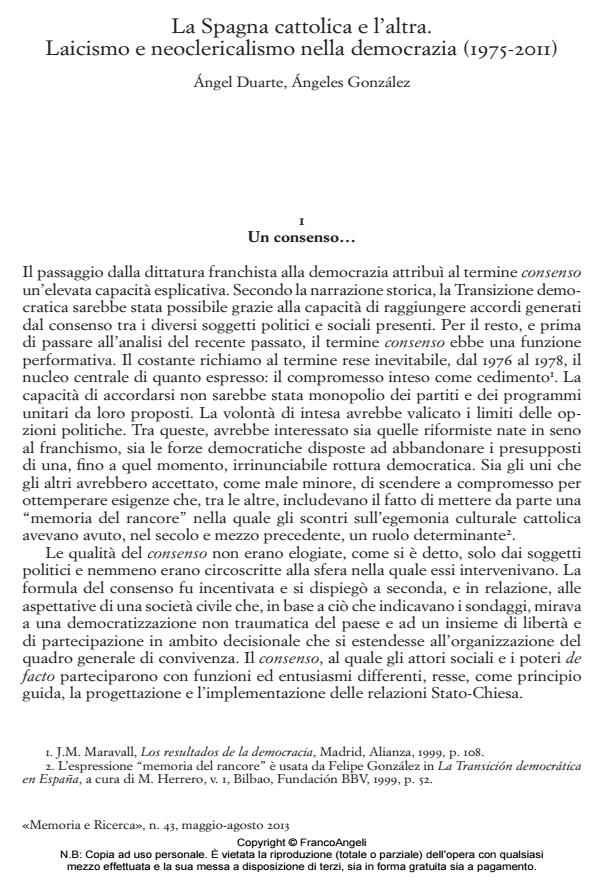Catholic Spain and the other. Laicism and neoclericalism during the democratic period (1975-2011)
Journal title MEMORIA E RICERCA
Author/s Angel Duarte, Angeles Gonzàlez
Publishing Year 2013 Issue 2013/43
Language Italian Pages 18 P. 67-84 File size 133 KB
DOI 10.3280/MER2013-043005
DOI is like a bar code for intellectual property: to have more infomation
click here
Below, you can see the article first page
If you want to buy this article in PDF format, you can do it, following the instructions to buy download credits

FrancoAngeli is member of Publishers International Linking Association, Inc (PILA), a not-for-profit association which run the CrossRef service enabling links to and from online scholarly content.
The aim of this paper is to analyze the accommodation of the Catholic Church to the new conditions of their own power and influence indemocratic Spain. At the same time, it aims to connect these conditions with the accelerated process of secularization experienced by Spanish society as a whole, in the last years of the twentieth century. Consensus and the good intentions expressed when Democratic Transition are over. Renewed conflictual climate governments relations between political powers, citizenship and Catholic hierarchy. Anti-clericalism, secularism and neo-Catholicism increase the division of public opinion. A question from the past reappears with winds that sometimes are threatening to democratic life. Education, family-model, divorce, gay marriage, laws on abortion and the limits to scientific experimentation with stem cells, the public funding of the Church and so on have been the elements of an agenda that has ended being a new battlefield. The Catholic and anticlerical responses have highlighted the limits of previous secularizing process.
Keywords: Secularization, anti-clericalism, democratic transition, Catholicism, laicity, Spain
Angel Duarte, Angeles Gonzàlez, La Spagna cattolica e l’altra. Laicismo e neoclericalismo nella democrazia (1975-2011) in "MEMORIA E RICERCA " 43/2013, pp 67-84, DOI: 10.3280/MER2013-043005